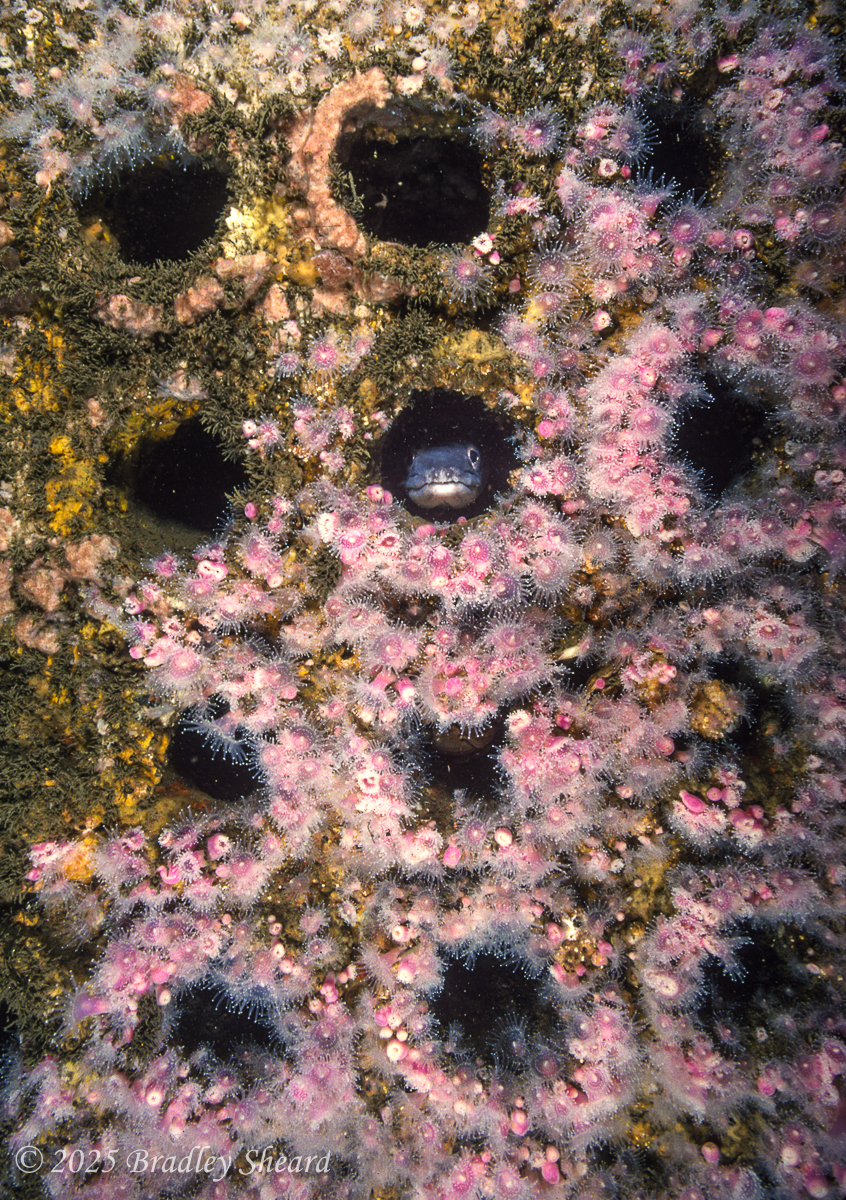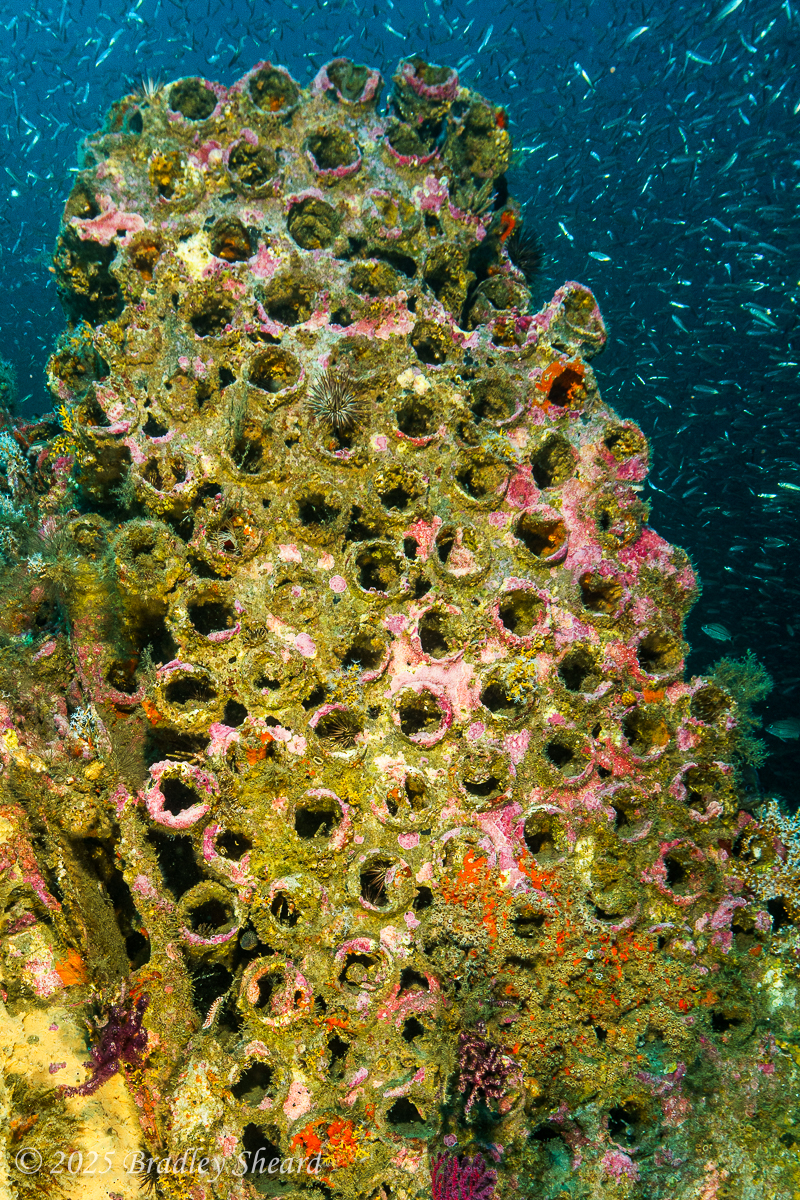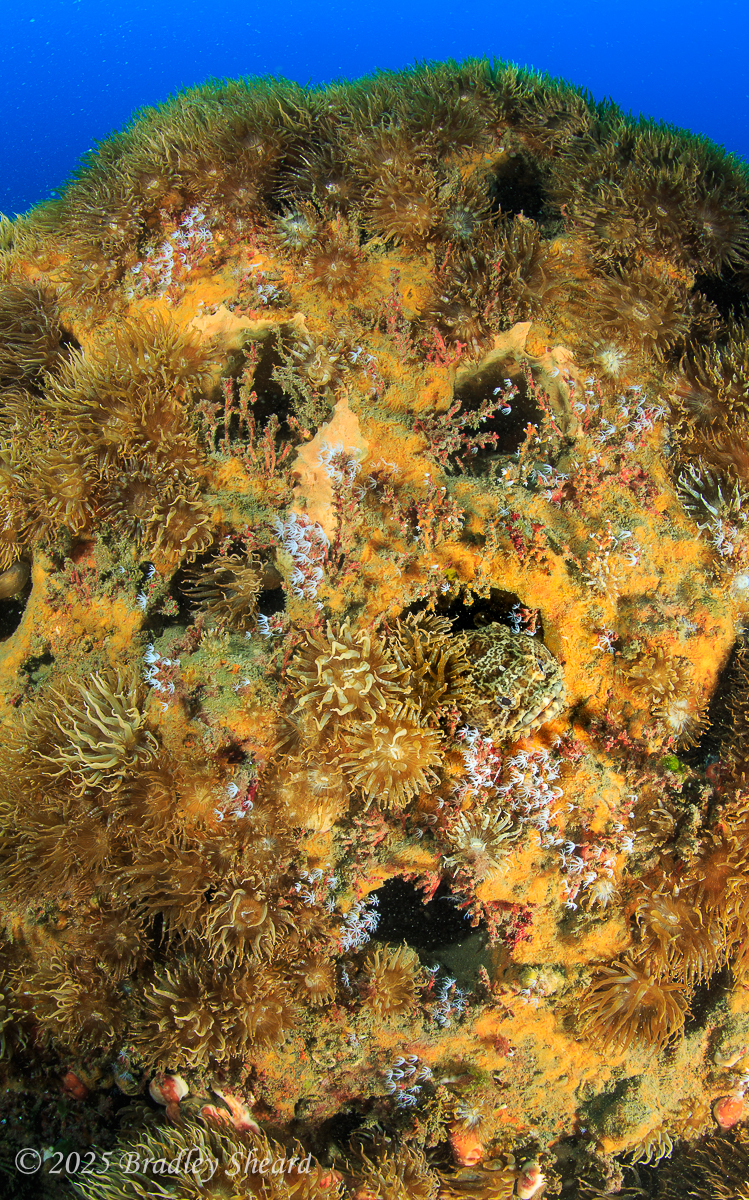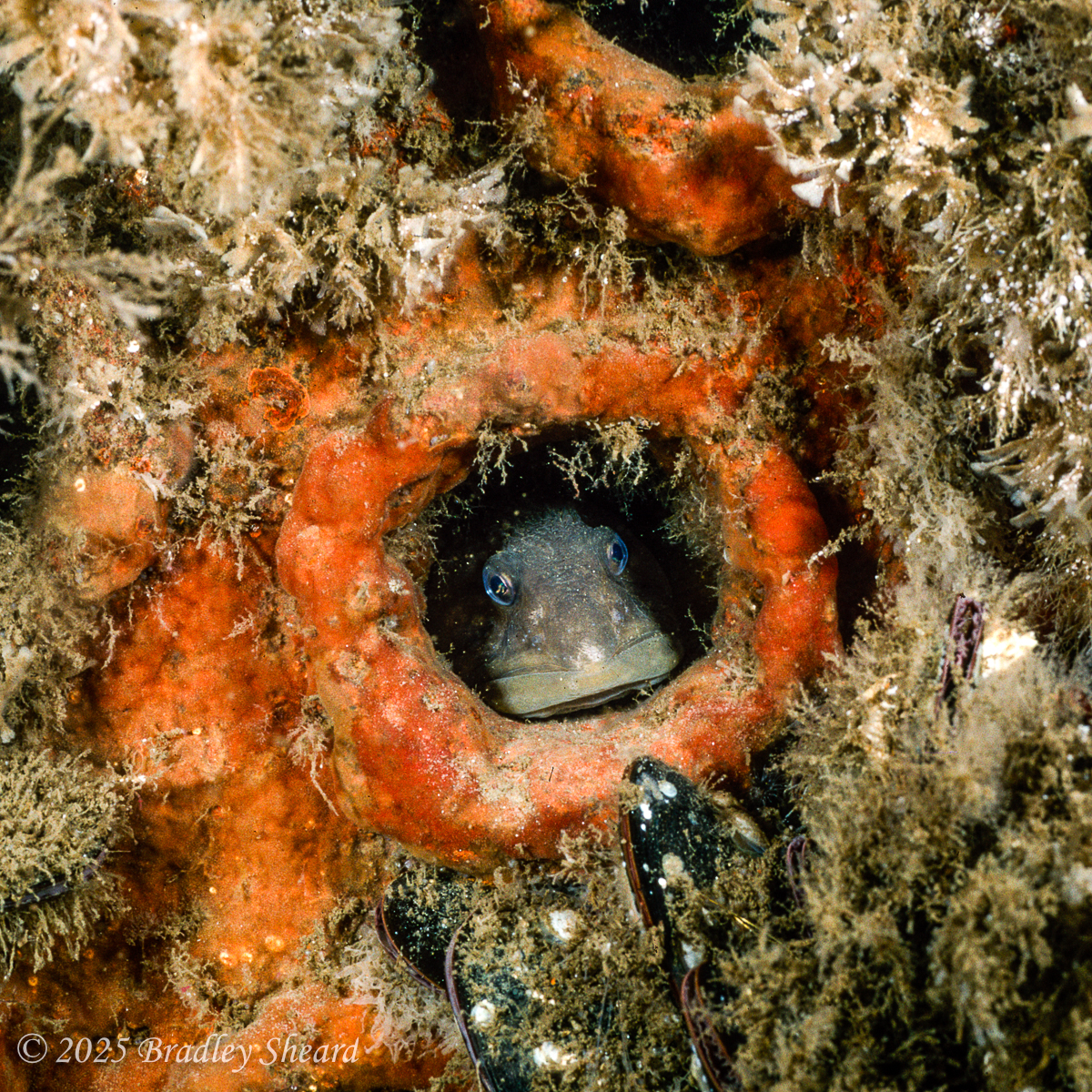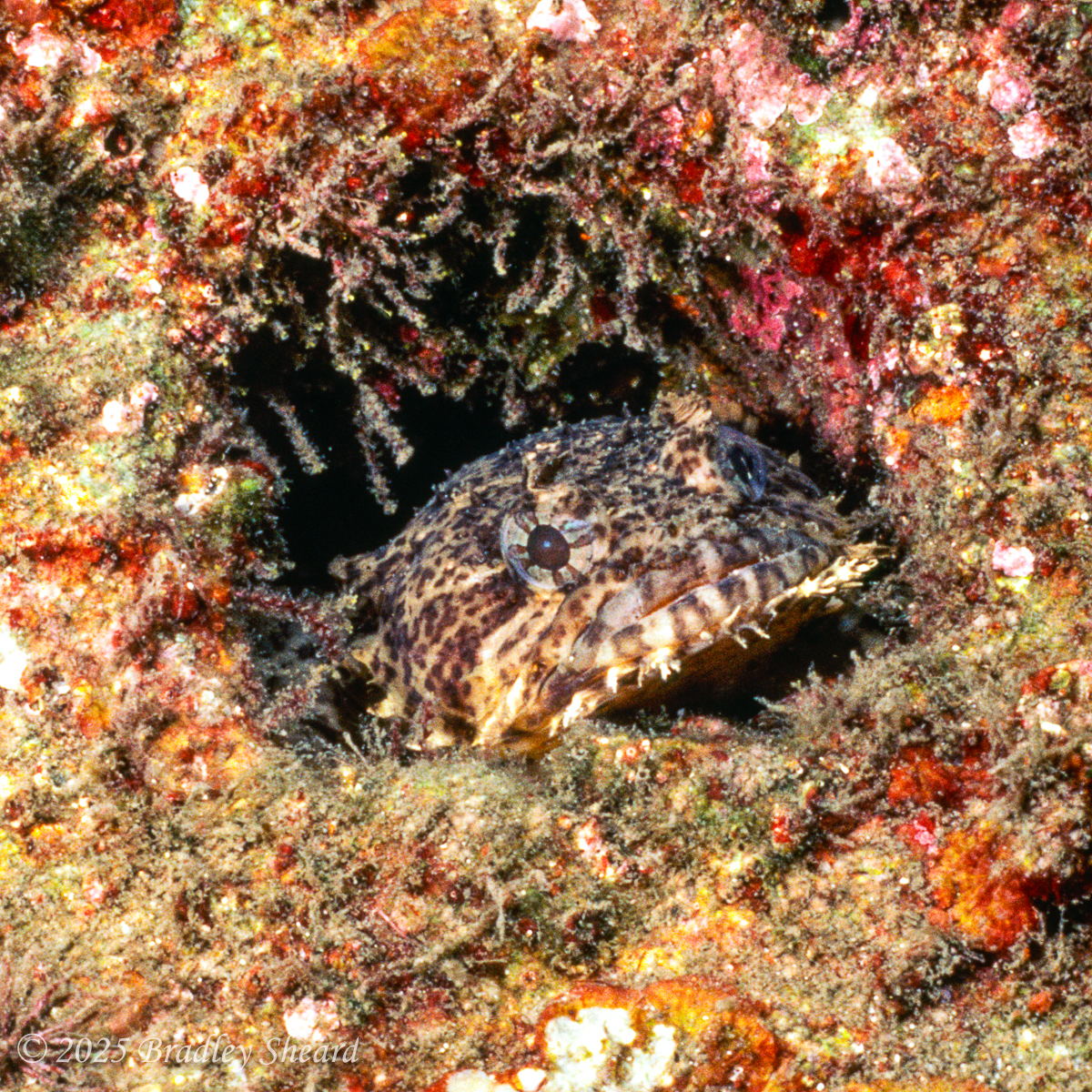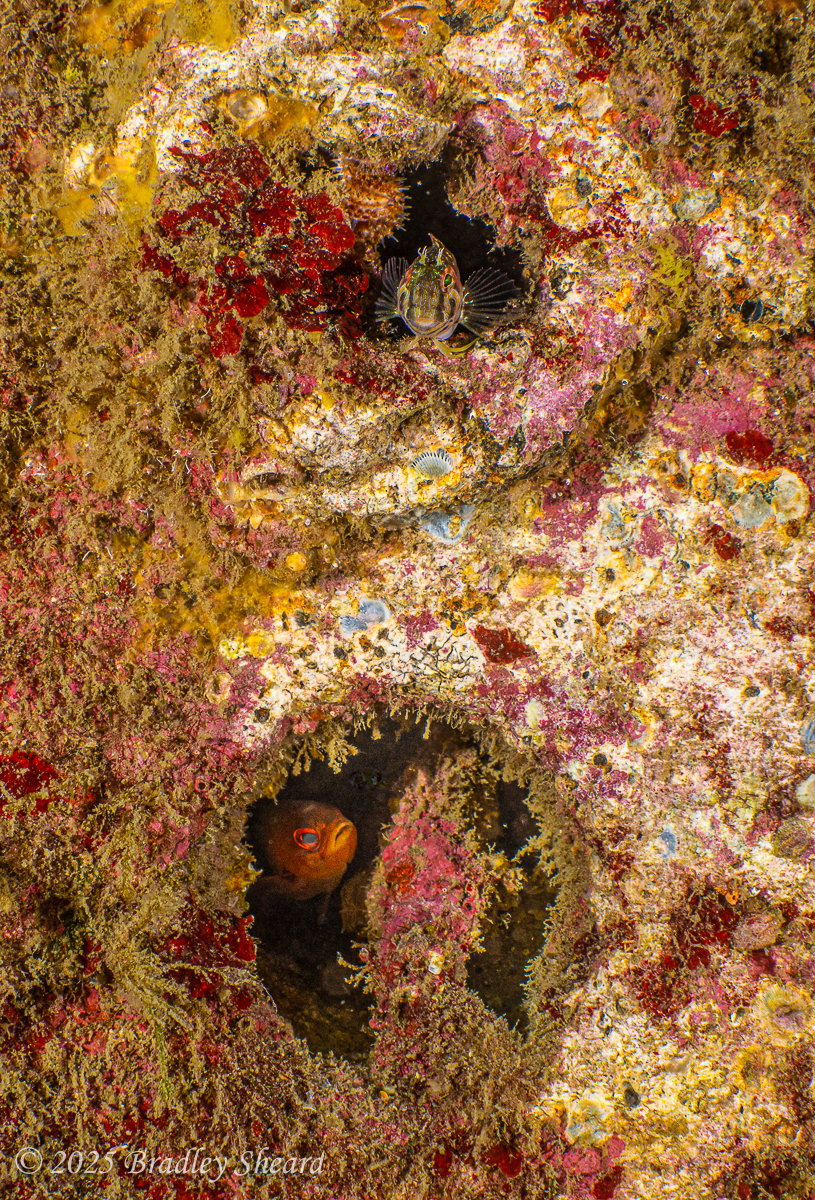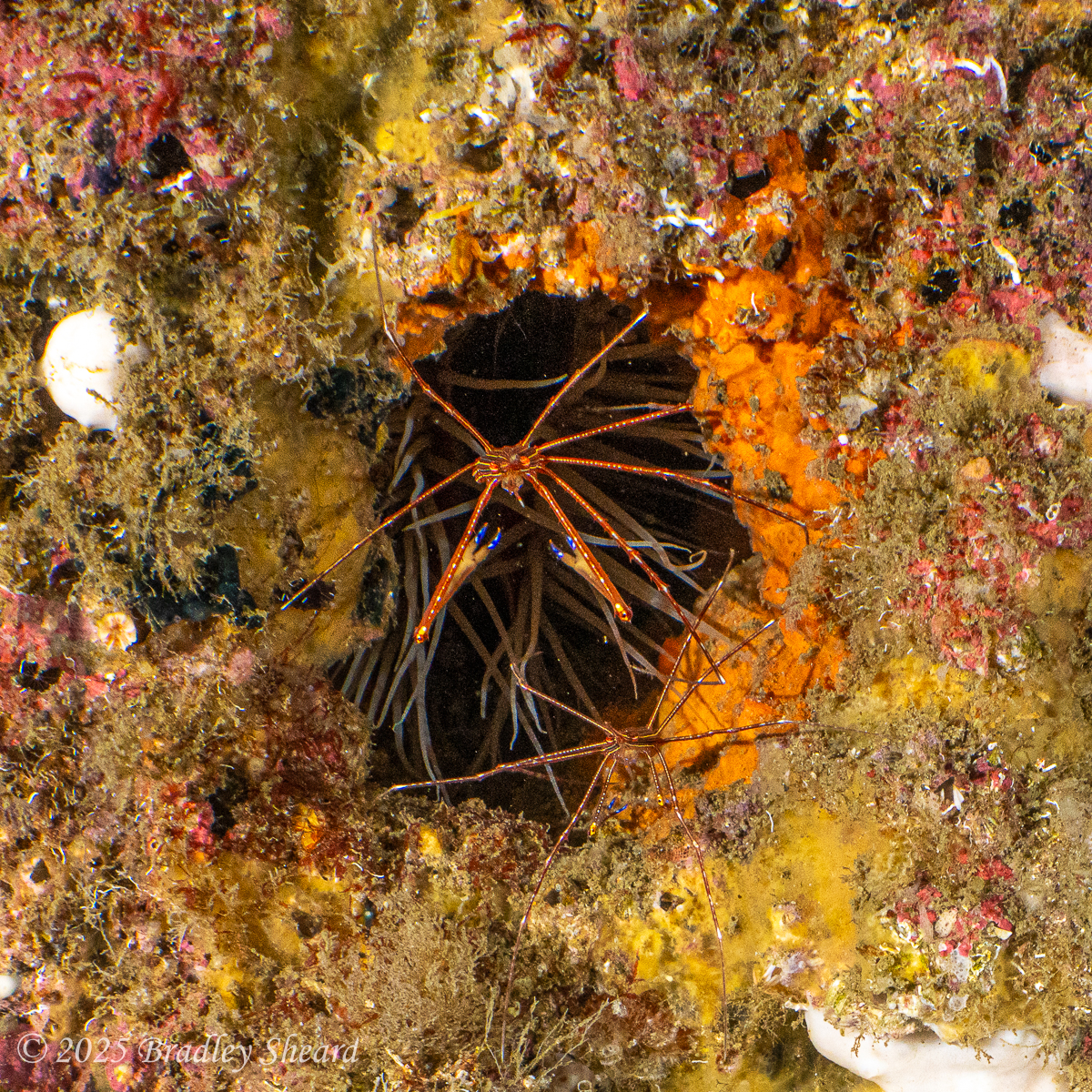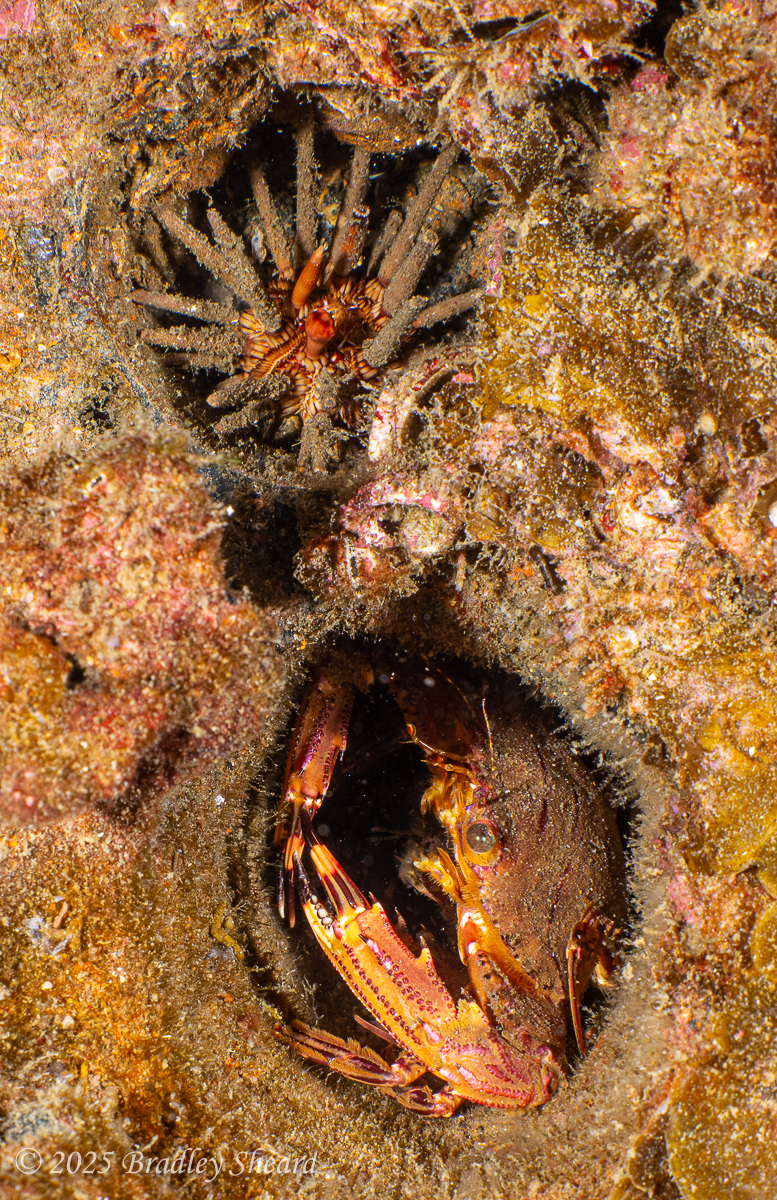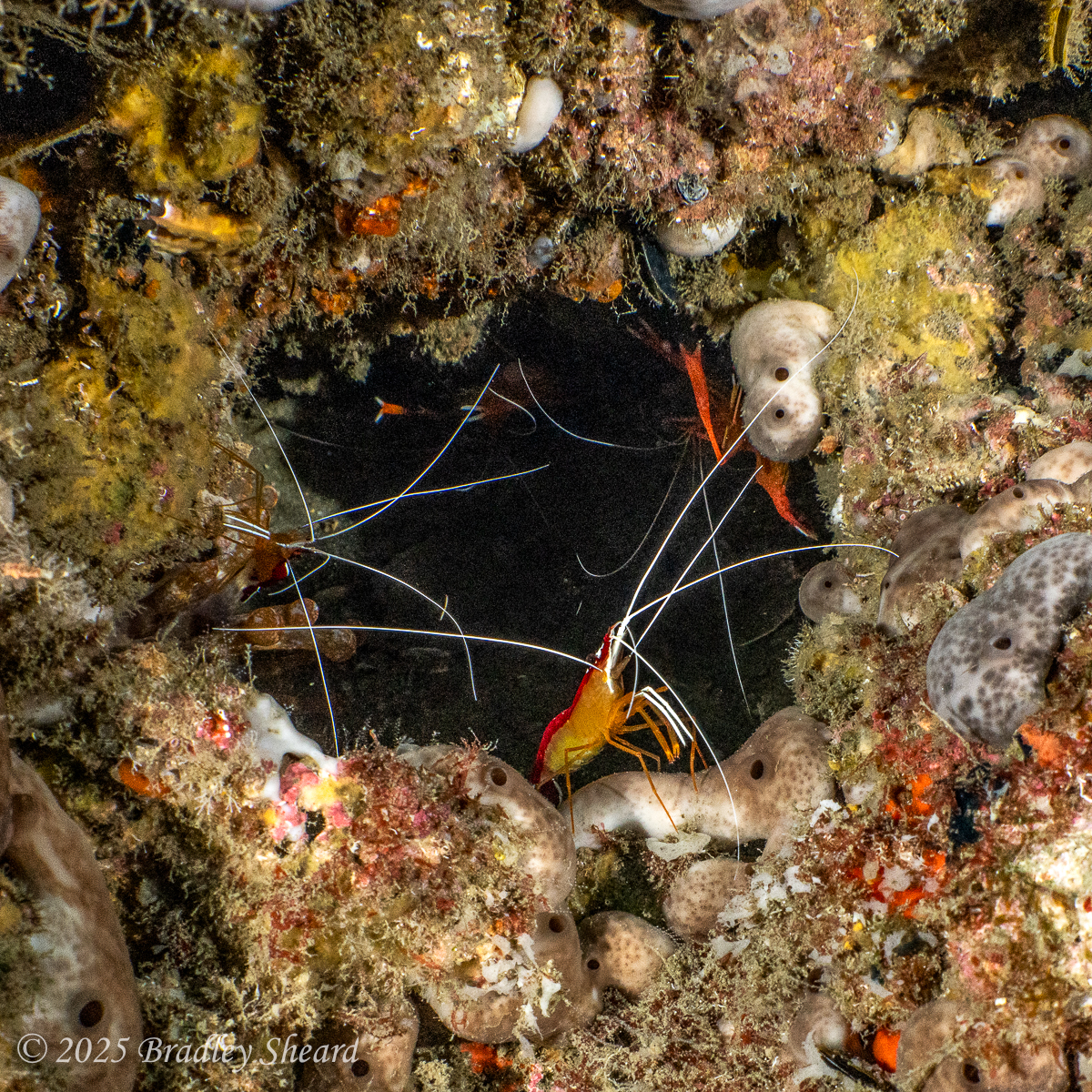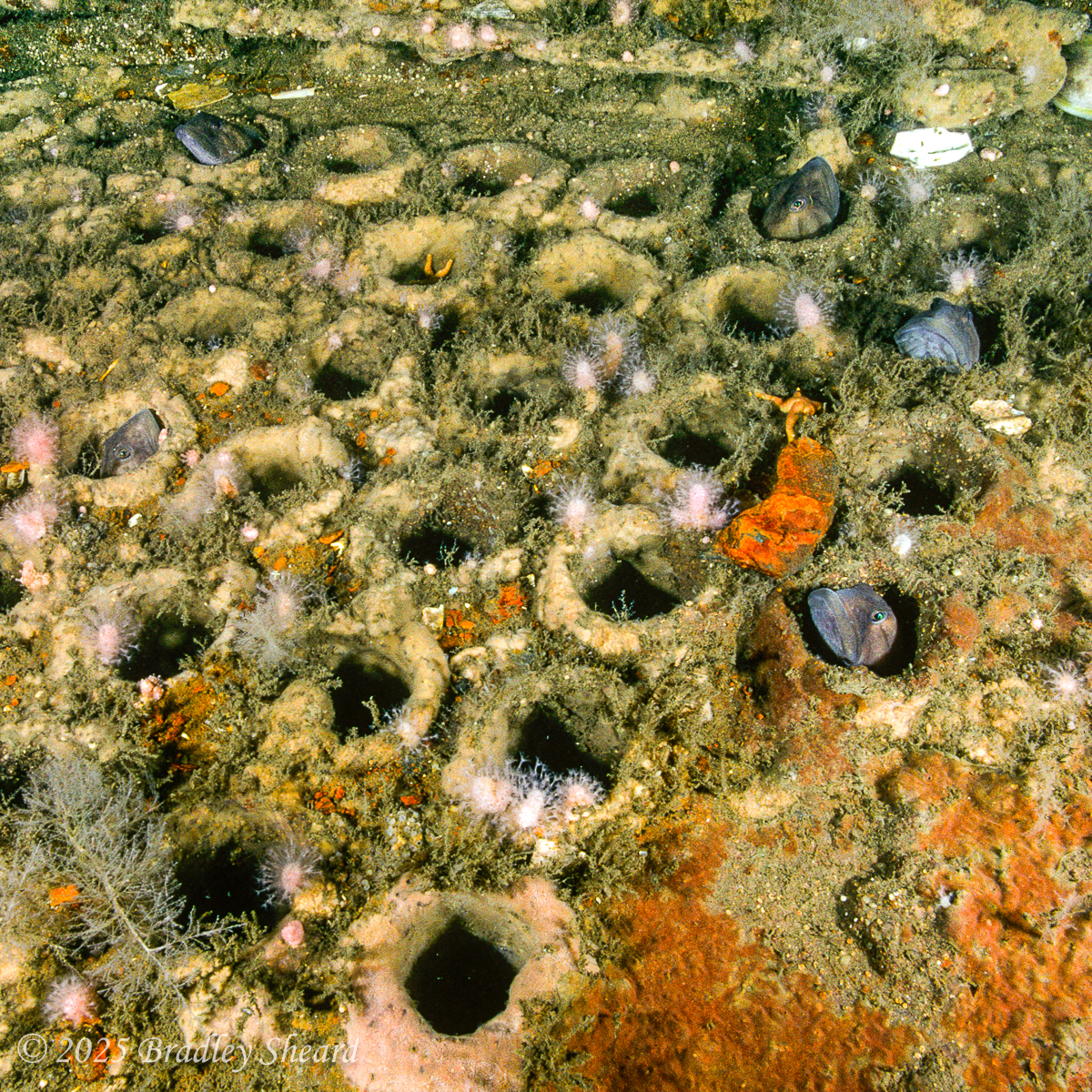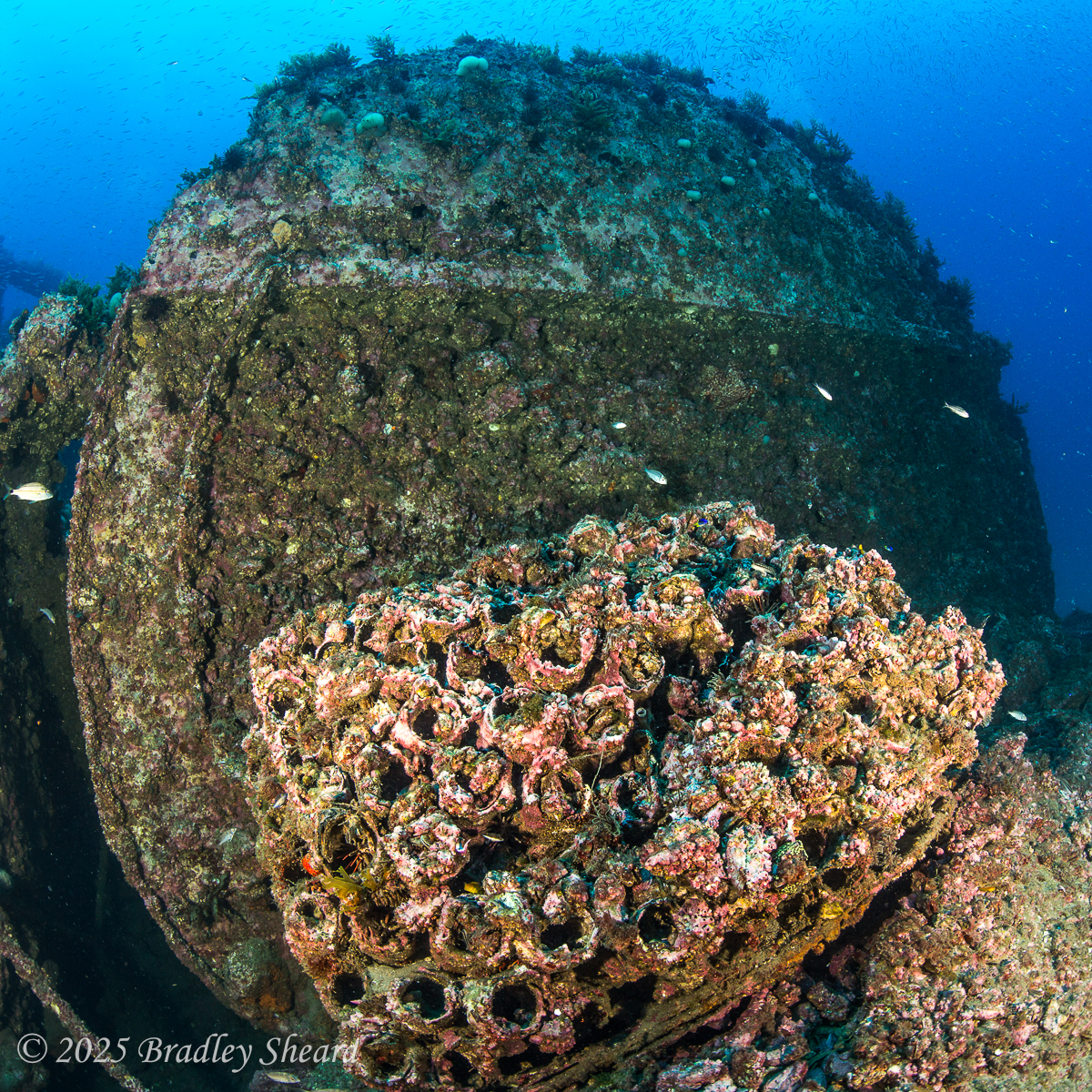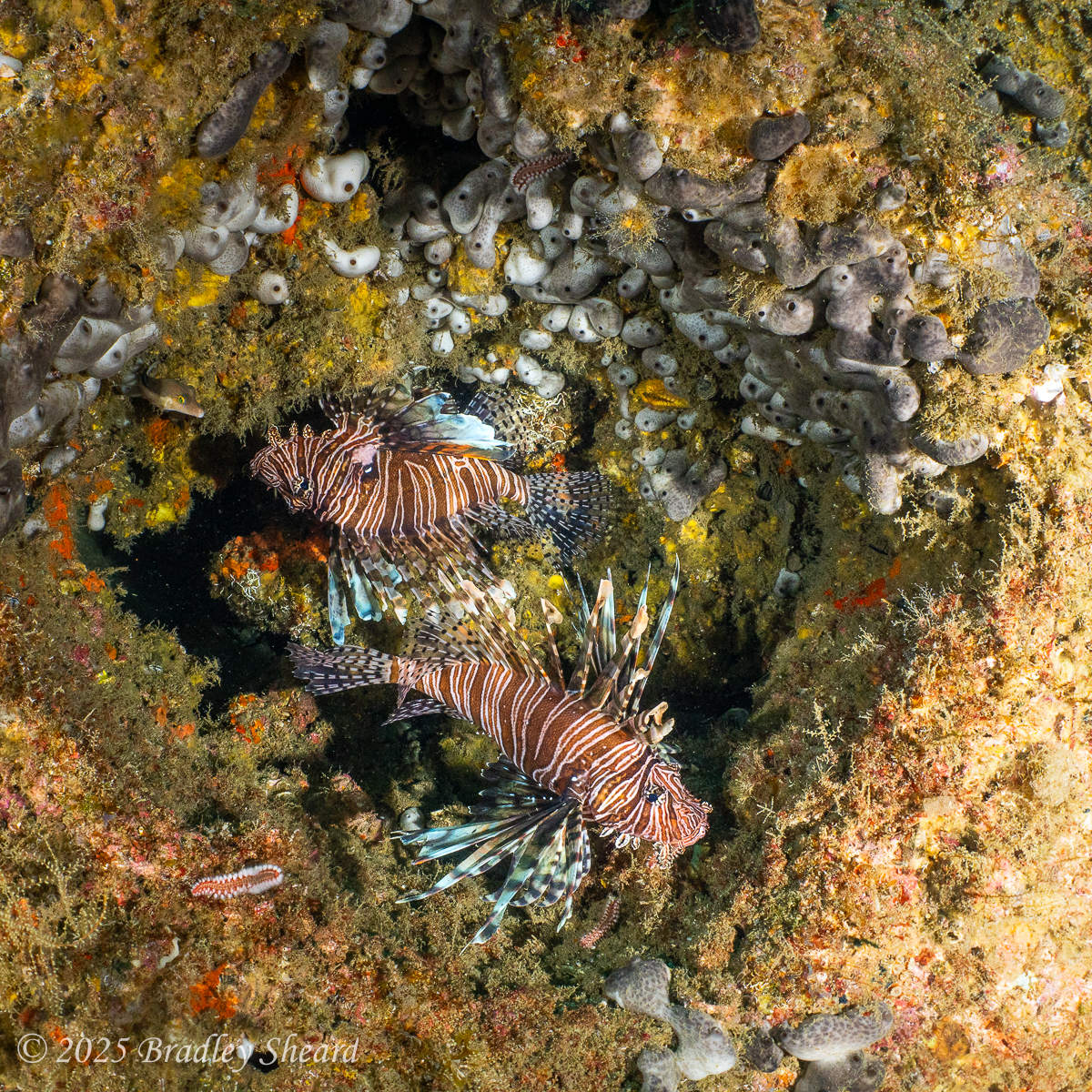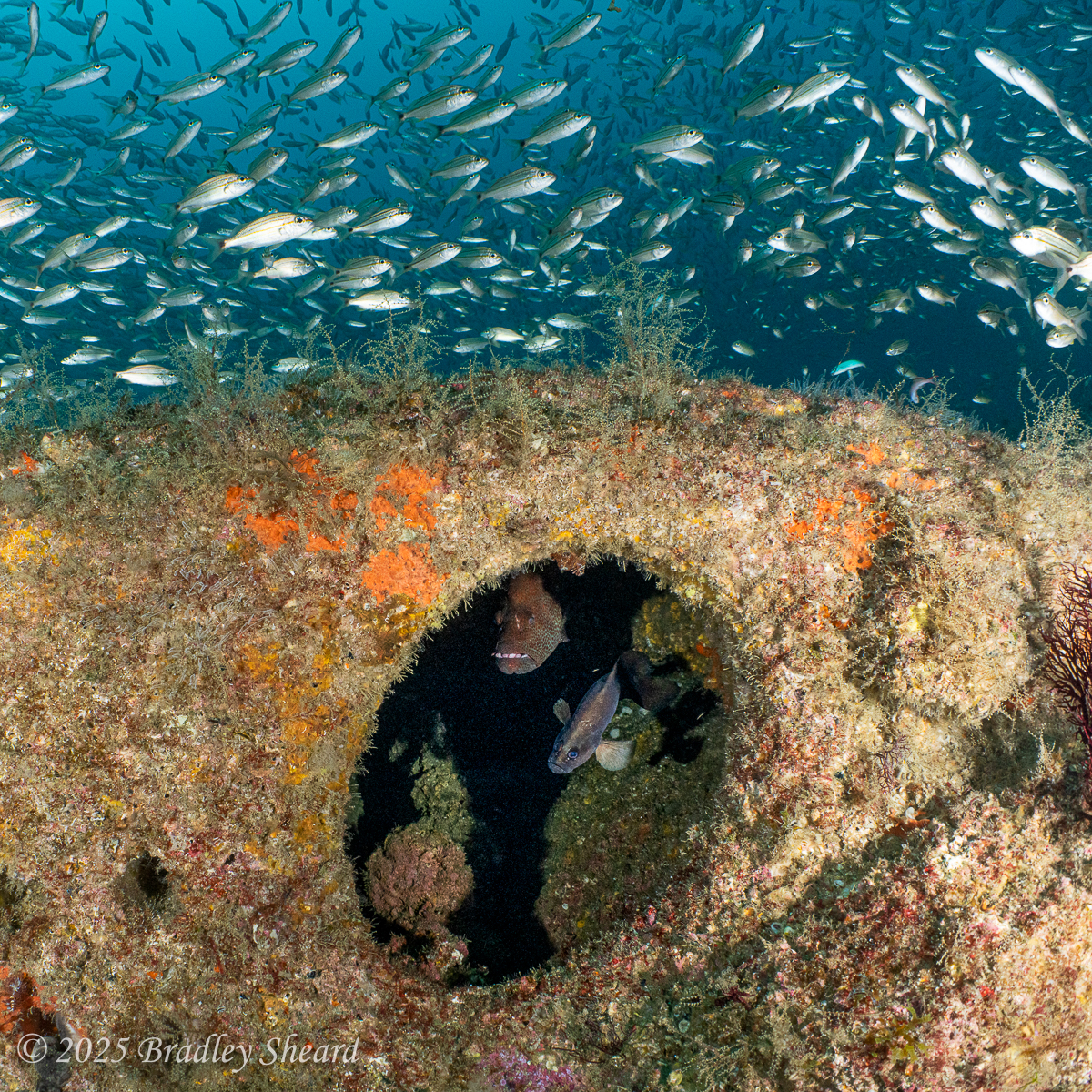The Steamship Boiler: The Power Behind the Engines
with an Afterlife as a Marine Life Hotel
As the design of marine power plants developed during the second half of the nineteenth century, boiler design grew more sophisticated. Ship designers required higher steam pressures in order to provide more efficient engines. In order to achieve those higher pressures, boilers changed from simple box-like structures into the more familiar cylindrical marine boiler—known as a "Scotch" boiler. A cylinder is a much more efficient shape for a pressure vessel than a flat-sided box, and allows the development of higher steam pressures without causing the boiler to burst. The lower half of a cylindrical boiler usually contained between two and four furnaces, where coal-stoked fires burned to heat water inside the boiler and change it into steam. It was soon discovered that additional heat energy could be drawn from the hot furnace gases that were a by-product of the coal fires. This was accomplished by venting the hot gas through a series of small tubes (boiler tubes) that passed back through the boiler before being exhausted out the familiar ship's smoke stack. These tubes can usually be seen on the flat ends of a cylindrical boiler, about midway up the face and above the large cylindrical furnace openings. | |
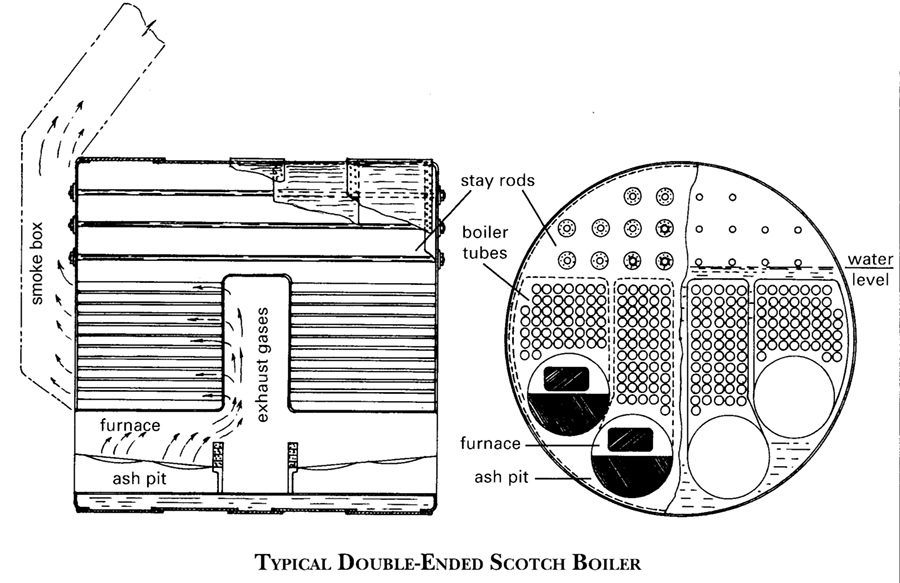 |
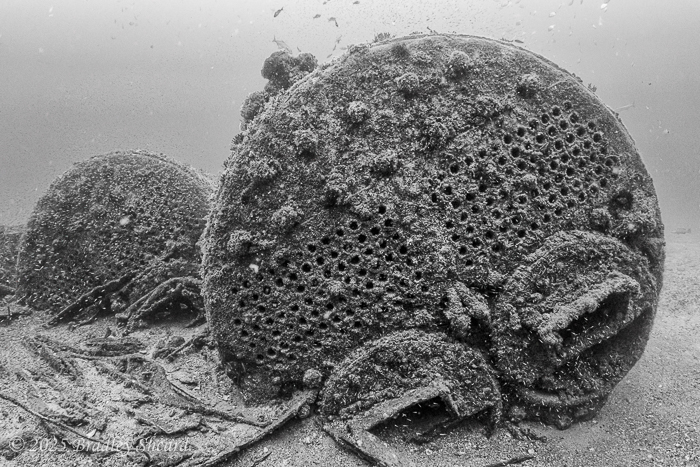 |
| Schematic of a typical marine boiler, showing the different parts. Note that the stay rods and boiler tubes serve to hold the flat ends of the boiler together under the internal pressure of the steam. The boiler tubes provide a pathway for the hot exhaust gas from the furnace to exit up to the ship's smoke stack; these hot gasses pass through the boiler to transfer more heat into the boiler's water in order to create steam. (from Lost Voyages by Bradley Sheard) | A pair of boilers on the wreck of the steam tug Keshena sunk off Cape Hatteras, NC. Clearly visible are the two furnaces at the bottom, the boiler tube array above the furnaces and the stay rods toward the top. |
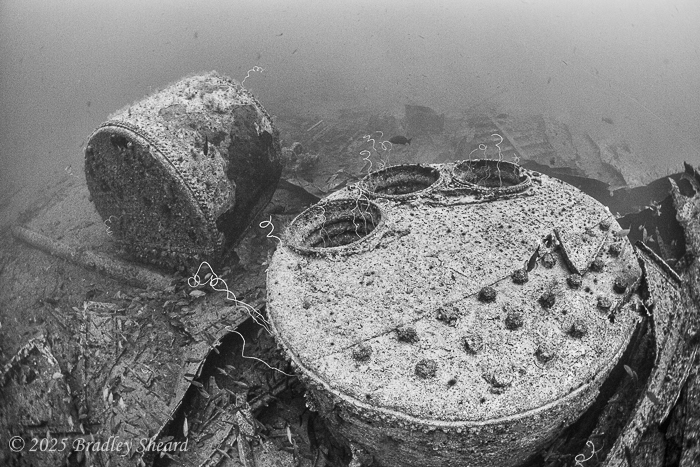 | 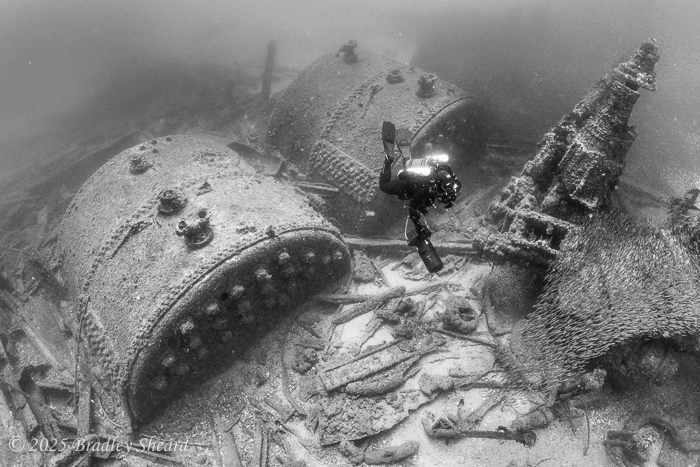 |
| WWII freighter Malchase (July 2009, digital) | WWII tanker FW Abrams (June 2023, digital) |
| The Malchase was torpedoed off the NC Outer Banks during WWII. Today her hull is largely broken into pieces, but two classic steam boilers sit amongst the wreckage, one upended (foreground) while the other sits as it did in life. The three coal furnaces, boiler tubes and the ends of the stay rods are clearly visible on the boiler face. | The FW Abrams was a victim of 'friendly fire' when it hit a US mine field off Hatteras Inlet in 1942. Today she is largely broken down, including her steam engine, but her boilers are clearly intact and sitting just as they did in the ship, although half-buried in the sand. |
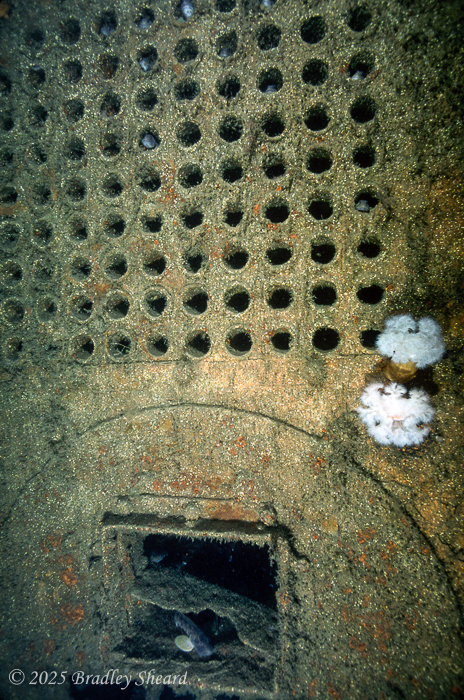 | 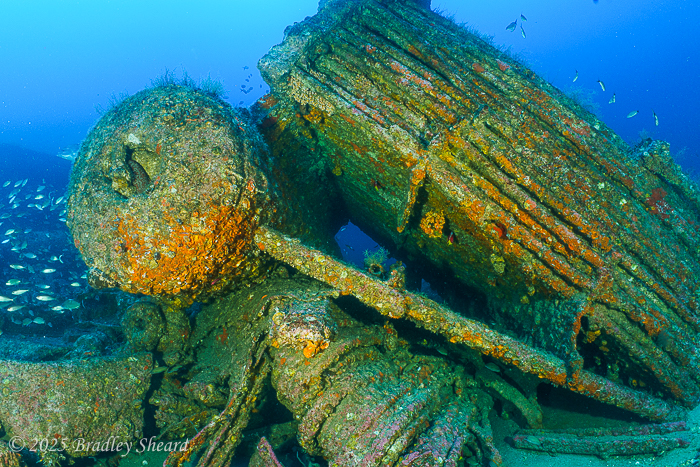 | 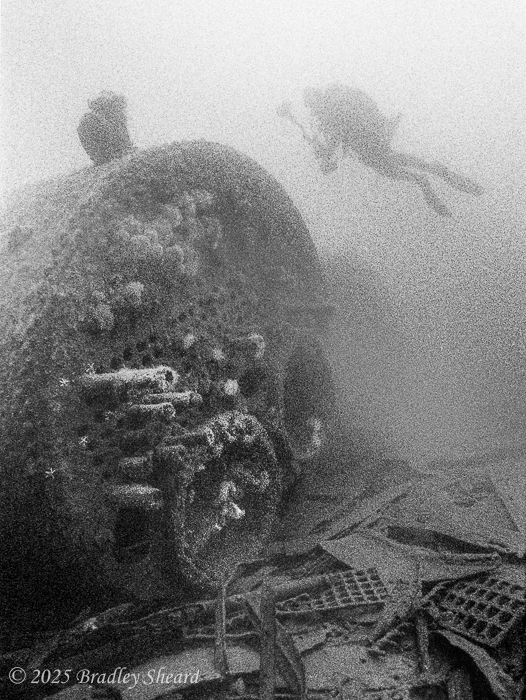 |
| WWI freighter Texel (August 1996, film) | WWII freighter Manuela (June 2023, digital) | Excursion Steamer Romance (April 1994, film) | /tr>
| The Texel was sunk by U-151 during WWI and today sits largely collapsed in 230 feet of water. Her boiler is relatively free of marine growth due to the depth, giving a very clear view of the boiler tube array above the furnace. What small marine creature could resist making its home in such and apartment complex? | The WWII freighter Manuela was not built with a classic set of round boilers and a triple-expansion steam engine like most of her contemporaries, but rather with a pair of Babcock and Wilcox watertube boilers (above) driving twin steam turbines geared to a single propeller. Rather than burning coal to produce steam, she burned bunker oil. | Sunk just outside the entrance to Boston Harbor in 1936, the excursion steamer Romance is largely broken down and scattered across a muddy bottom. One of the few remaining features of the wreck site, however, are her boilers. Note the boiler tubes protruding from the flat end of the boiler. |
The Boiler Tube Creatures
|
The boiler's "fire tubes," as they are sometimes called, now provide a fascinating marine habitat on sunken steamships. Forming a honeycomb-like structure much like a beehive, these banks of boiler tubes amount to an underwater apartment complex for a wide variety of fish and invertebrate life. Measuring two to four inches in diameter, each tube is the perfect size for a small animal or fish. In many ways they are reminiscent of the apartment-like bird houses sometimes erected for purple martins, with each individual boiler tube serving as a home for a tiny, individual animal. I first noticed this wonderful adaptation of an old boiler off the coast of North Carolina years ago. With the weather too rough to trek out to one of the offshore wrecks, we spent the day diving a tiny Civil War era wreck subsequently identified as the Nevada. Since the wreck was small there wasn't very much exploring to do—until I noticed all the critters living in the old square box-boiler. North Carolina's Outer Banks are bathed in clear, warm Gulf Stream water that supports a rich variety of life commonly seen on Caribbean reefs. Here in the Nevada's boiler I found tiny arrow crabs standing on long, stilt-like legs, guarding the "doorway" to their homes. Next-door, thick-tentacled sea anemones were filter feeding on passing nutrients, while tiny tropical fish schooled by outside. After this experience, I found myself stopping to examine the boilers on almost every shipwreck I dived. I soon discovered that many of the wrecks off the Carolina coast had boilers with very few, if any, "vacancies." Sea urchins, their long black, needle-like spines waving gently in the current grazed across the face of many boilers, while a closer look revealed tiny blennies darting from boiler tube to boiler tube, unable to decide which "house" they preferred. Sometimes I found colorful coral shrimp hiding shyly just inside a carefully chosen abode, only daring to venture outside under cover of darkness. Juvenile toad fish are another frequent inhabitant of these boiler tube apartments, and their ugly head and broad lips can often be seen protruding from their homes, sinister eyes peering angrily out at the surrounding community. I also began to notice that these fantastic communities were not limited to the warm southern waters off the Carolinas. North of Cape Hatteras the Gulf Stream current moves further offshore and is replaced by colder water from the Labrador current. This cold water supports an entirely different cast of characters, but an inquisitive diver can still find thriving communities living in many an old boiler. Rock crabs are common in northern waters, and the juveniles of the species can often be found nestled snugly inside the round tubes perforating the flat end of a boiler. Another northern crustacean, the delicious lobster, would seem too large to establish residence in the tiny fire tubes of a boiler, but the smallest juveniles can be found living there as well. As do adult lobsters, the youngsters occupy their little caverns with just their claws and perhaps an antenna hanging out for observant passers-by to see. "Next-door" might be a baby ocean pout, its expressionless face, punctuated by fat lips and a long sloping forehead, peering out at his surroundings. The face of the boiler itself is often decorated with a rich veil of marine growth that would do justice to any decorator, ranging from yellow and orange sponges to pink or purple soft corals. Each of these old ship's boilers supports an inter-related and complex community of animals that is often missed by visiting wreck divers. Overwhelmed by the magnificent vista and rich history of a sunken ship, they often dart from place to place trying to "see it all." But in your haste to explore be careful not to miss the trees for the forest, and take a closer look at that rusty old boiler the next time you're exploring that favorite shipwreck. |
| --Click on any of the images below for a larger pop-up version-- |
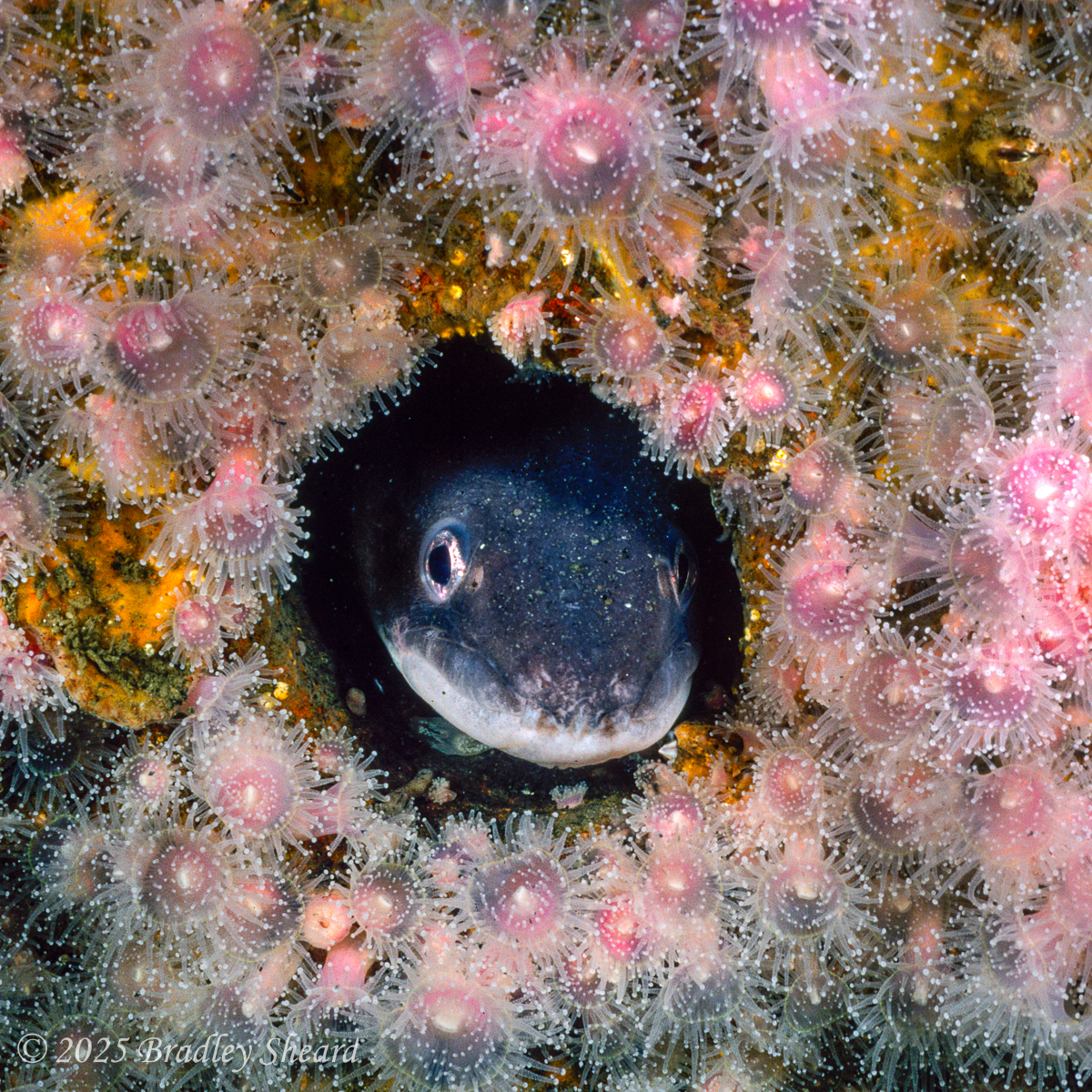 | 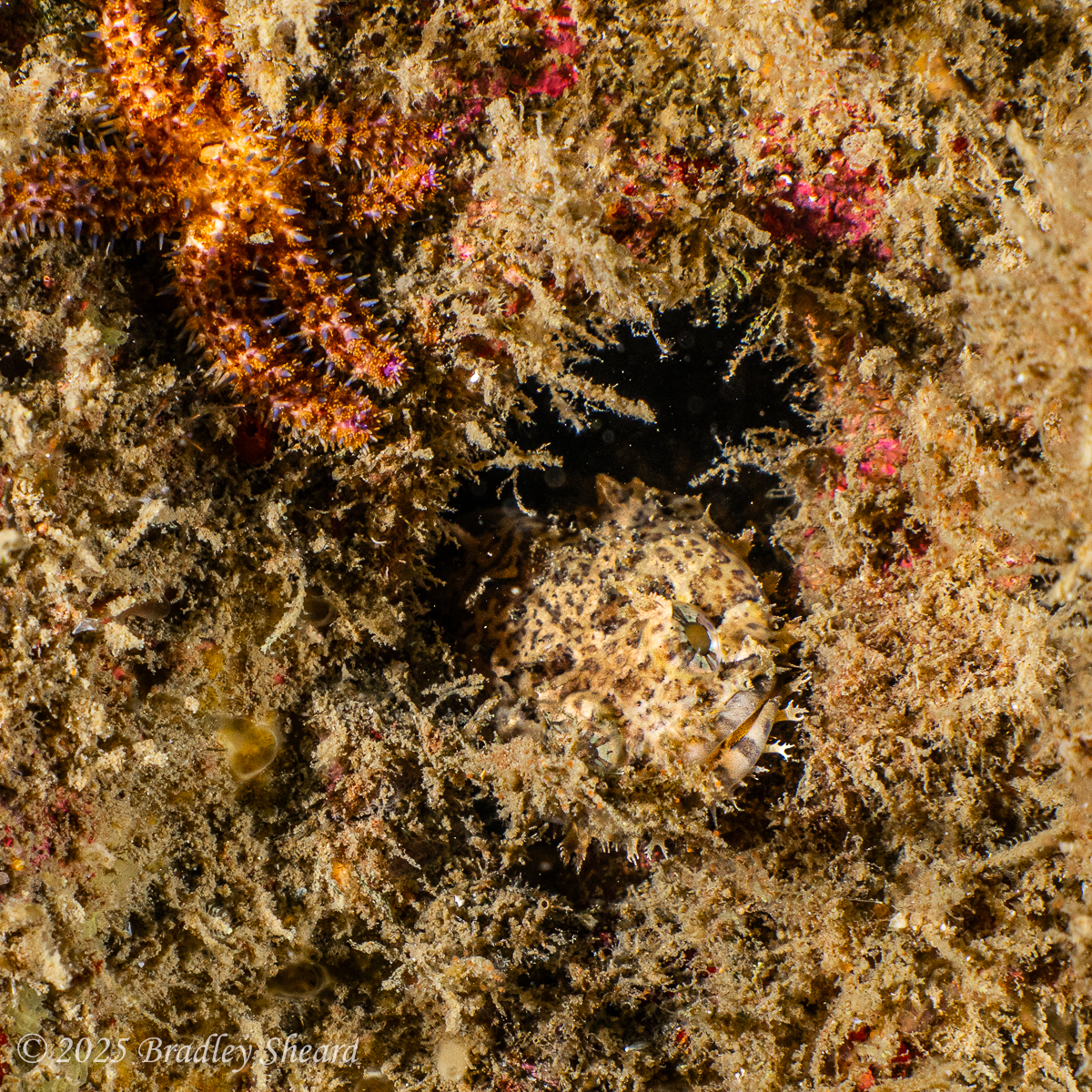 | 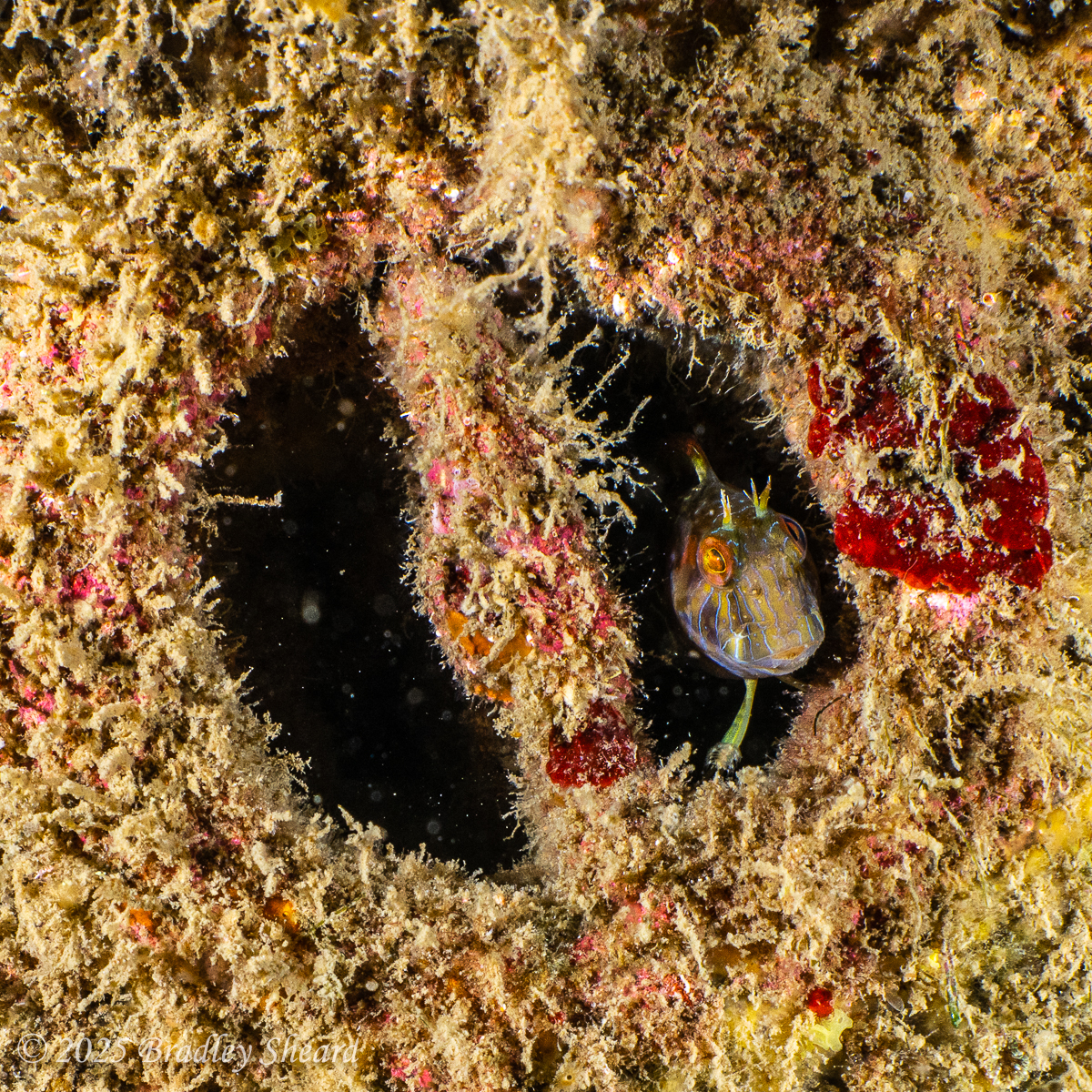 | 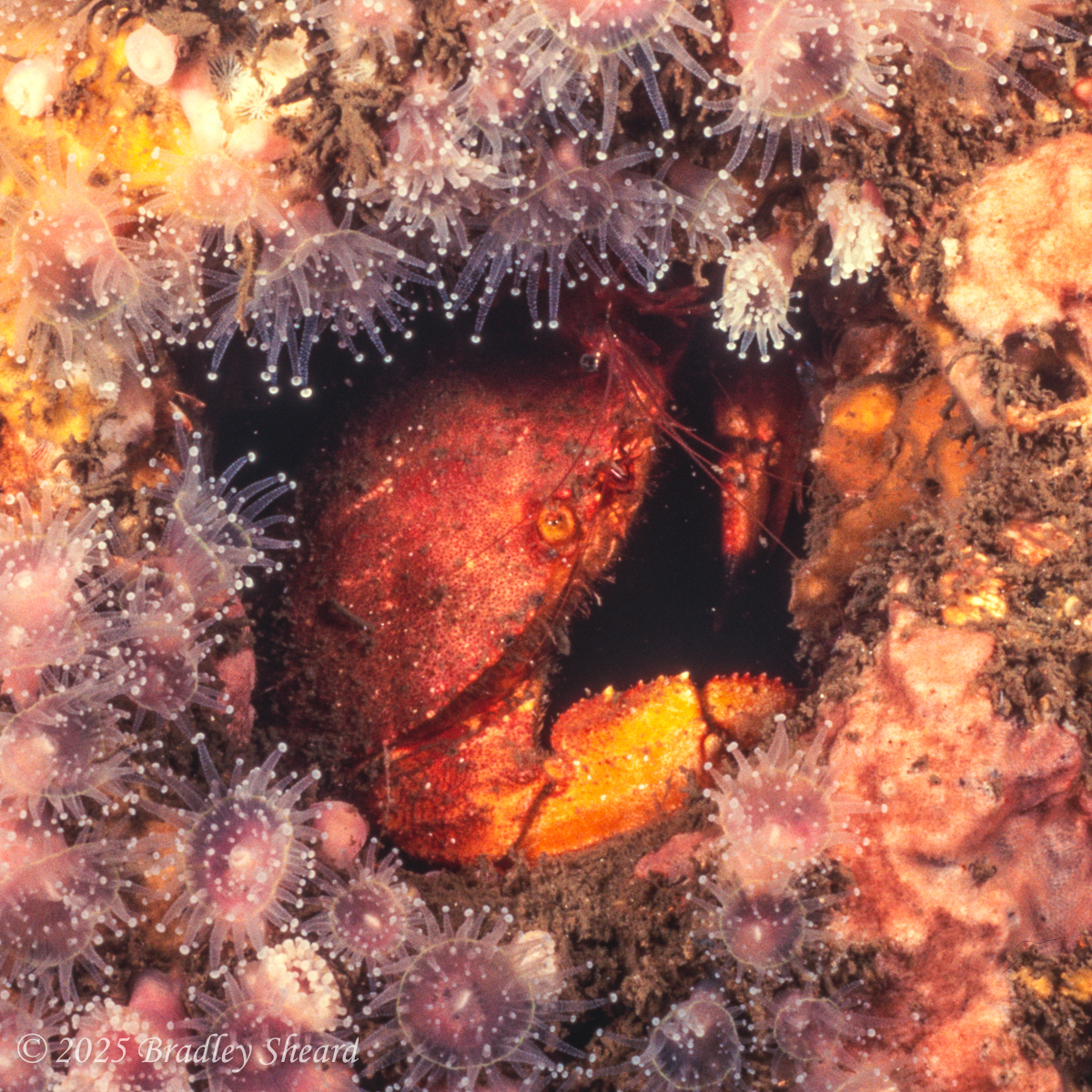 |
| eel and soft coral, Mexicano (September 1994, film) | tiny oyster toadfish, FW Abrams (June 2022, digital) | blennie, FW Abrams (June 2022, digital) | crab, Mexicano (September 1994, film) |
Much of this article was originally published in the August 1995 issue of Sport Diver magazine.
REFERENCES:
Gentile, Gary. "Popular Dive Guide Series," various dates
Sheard, Bradley. "Lost Voyages: Two Centuries of Shipwrecks in the Approaches to New York," 1998

